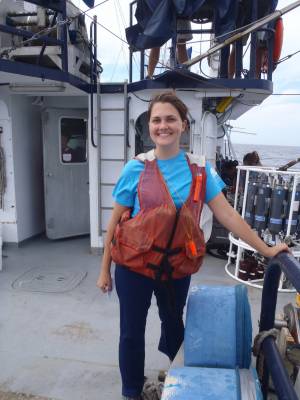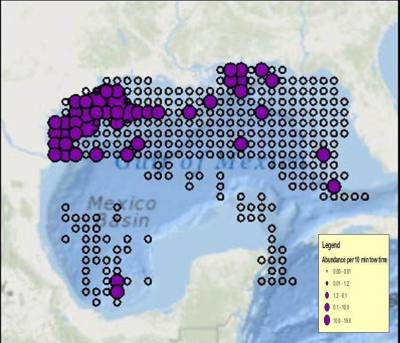
Emily Chancellor, C-IMAGE Student of the Month, August 2014
Emily Chancellor is a MS student working on larval fish exposure to oil in the Gulf of Mexico. She is a student of Steve Murawski’s out of the College of Marine Science at the University of South Florida. She was asked two questions about her research and her daily activities.
Big Picture
1) What is your research project and why is it important and relevant to the GoM?
My thesis research focuses on estimating the proportion of larval fish of economically important species that were exposed to oil during the Deepwater Horizon (DWH) oil spill in the Gulf of Mexico (GoM). Larval fish play an important role in determining adult fish populations and are especially vulnerable to oil. Many economically important species spawn in GoM waters during the time period of the DWH oil spill and their larval fish were likely exposed. Understanding the proportion of larval fish exposed by species will contribute to understanding the impacts of the DWH oil spill on long-term health of these important fish stocks. I am looking at historical records of larval fish abundance in the GoM from the Southeast Area Monitoring and Assessment Program (SEAMAP) database and modeling these abundances against the extent of the DWH spill in order to estimate the proportion of each species affected. I am also investigating how time of year and ocean factors correlate with larval distribution to see if I can predict larval abundance and proportion exposure to hypothetical GoM oil spills occurring in different times and areas.

Little Picture
2) What are you doing today?
I am currently working on measuring the robustness of the SEAMAP larval fish record from year to year to see if the larval fish distributions remain relatively constant.I am doing this by measuring the observed changes in the distributions from year to year and comparing that to the theoretical changes we would see if the distributions changed randomly and there was no consistent pattern in larval distribution.
If the year to year larval distributions can be shown to follow a pattern, than the predicted estimates of the species proportion exposed to oil will be more significant.

Distribution of red snapper larval fish collected by the neuston method.
Thank you Emily!!! Next month we’ll talk to another C-IMAGE student about his/her research… Stay tuned!


